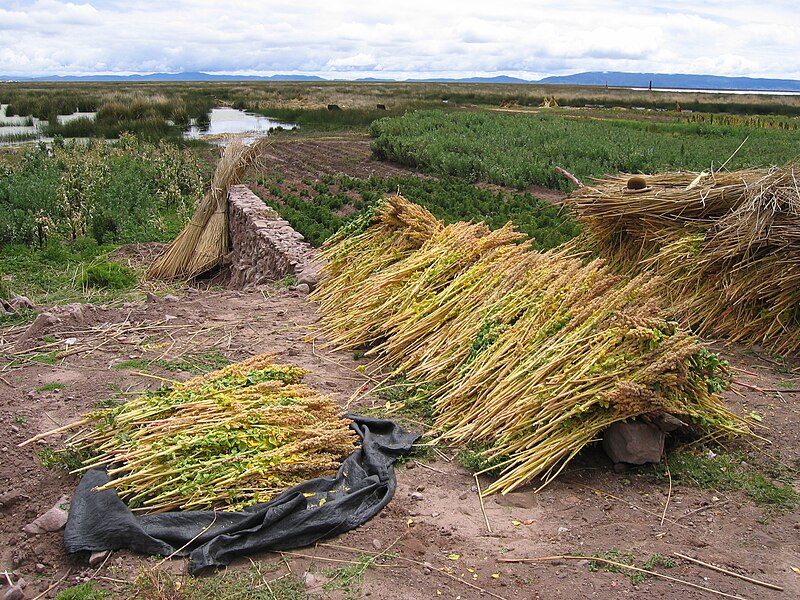Agro-export investment in Peru has a promising future with the new Puerto de Chancay hub. Agricultural exports are vital to the Peruvian economy, serving as a cornerstone for economic growth, employment, and poverty reduction.
Economic Diversification and Rural Development
Peru’s agricultural sector has significantly diversified its economic base as one of the world’s top exporters of commodities such as coffee, asparagus, and quinoa. This diversification reduces the country’s dependency on mining and other traditional industries, fostering economic stability. The growth in agricultural exports has stimulated rural development, providing livelihoods for millions and driving infrastructural improvements in remote areas.
Emphasis on Organic and Specialty Products
Additionally, the sector’s emphasis on organic and specialty products caters to global markets’ increasing demand for healthy and sustainable foods, enhancing Peru’s competitiveness and brand value on the international stage. The foreign exchange earnings from agricultural exports also bolster Peru’s financial reserves, helping stabilize the national currency and improve the trade balance.
Government Support and Market Access
Moreover, the government’s supportive policies, including trade agreements and export incentives, have facilitated market access and attracted foreign investment, further propelling the sector’s growth. Thus, agricultural exports are not merely an economic activity but a strategic pillar that underpins Peru’s socio-economic development, resilience, and integration into the global economy. Agro-export investment in Peru has demonstrated a recent trend of consolidation and diversification, with new products continually being added. This success story is expected to fuel the ongoing interest of foreign direct and private investment, with exports serving as a critical gateway to other markets, leveraging the advantage of Peru’s free trade agreements.
Expert Insights: Juan Carlos Mathews
“Peru has a promising future for Peruvians and foreign companies that want to invest despite all the political concerns the country is currently experiencing. This sector of the economy is a significant opportunity not only to sell products of high quality to Europe but also for those who focus on guaranteeing a supply of high-quality products for demanding markets,” Juan Carlos Mathews, former Minister of Foreign Trade and Tourism of Peru and current Vice President of Internationalization of the San Ignacio Educational Corporation from Loyola, emphasizes the potential of agro-export investment in Peru.
Unleash Your Growth Potential:
Attract Foreign Direct Investment (FDI)
Learn how our proven strategies bring international capital to your organization. Schedule a free consultation today to discuss your unique needs and discover how we can unlock your growth potential.
Sustained Growth and Global Recognition
“For several years, Peruvian agro-exports have had sustained growth; Peru has become the number one supplier country in the world of blueberries, grapes, asparagus, organic bananas, organic coffee, second in avocados and fifth in mandarins. This is thanks to its privileged climate, which in some cases allows it to supply markets from different parts of the world throughout the year,” says Juan Carlos Mathews. However, competition between the same Peruvian companies intensified as production grew and only supplied the same markets. This caused prices to fall. Therefore, to improve the agro-export sector, the Ministry of Foreign Trade and Tourism (MINCETUR) implemented public policies to develop free trade agreements and open new markets. Peru has 22 free trade agreements with 58 partners and is one of Latin America’s three most open economies. In addition, trade negotiations are underway with India and Hong Kong, and negotiations are beginning with other countries.
Technological Advancements and International Competitiveness
Mathews, a master’s in educational innovation and PhD Candidate in Economic and Social Sciences, considers that substantial development has been achieved due to significant investment in technology and joint venture contracts between Peruvian companies and companies from other countries. “The sector has developed very strongly, in such a way that the fields of Trujillo or Ica (important agro-export production areas) are similar to those of California or any other part of the world regarding quality standards and competitiveness.” This advancement showcases the benefits of agro-export investment in Peru, driving modernization and international competitiveness.
Strategic Infrastructure Development: Puerto de Chancay
“Today, Peru is a supplier recognized for its quality; its seasonality allows it to have windows of opportunity and take advantage of consumer preference in some supermarkets in Europe, the United States, Canada, and China. However, there is always room for new competitors,” he says. “In effect, to compete, the Peruvian State is investing in various projects such as the development of the port of Chancay, which will play an important role in creating access to new markets and economic growth, carrying as its slogan ‘From Chancay to Shanghai.’ This new port will literally be a hub that will allow a significant departure of cargo not only from Peru but also from other countries in the region, and will also contribute to the reduction of freight costs and transit times,” says Juan Carlos Mathews. This infrastructure development highlights the strategic importance of agro-export investment in Peru for sustaining long-term economic growth.
A Bright Future for Agro-Export Investment in Peru
The future of agro-export investment in Peru looks exceedingly bright, bolstered by strategic infrastructural projects like the Puerto de Chancay hub. The continuous growth and diversification of Peru’s agricultural exports enhance the country’s economic stability and foster rural development and technological advancement. Government policies and international trade agreements further strengthen this sector, attracting foreign investment and opening new markets. With a strong emphasis on quality, sustainability, and global competitiveness, Peru’s agricultural sector is a robust pillar of the national economy, offering significant opportunities for local and international stakeholders. As Peru continues to build on its strengths and address challenges, agro-export investment will remain a crucial driver of socio-economic progress, ensuring a prosperous future for the nation.
Spanish language source article.
Don't Miss Out: Limited Spots Available for Free FDI Strategy Sessions
Foreign Direct Investment can fuel your organization's success. But competition is fierce. Secure your spot today for a free, no-obligation consultation with our FDI experts. Learn how to attract global investment and take your business to the next level.

